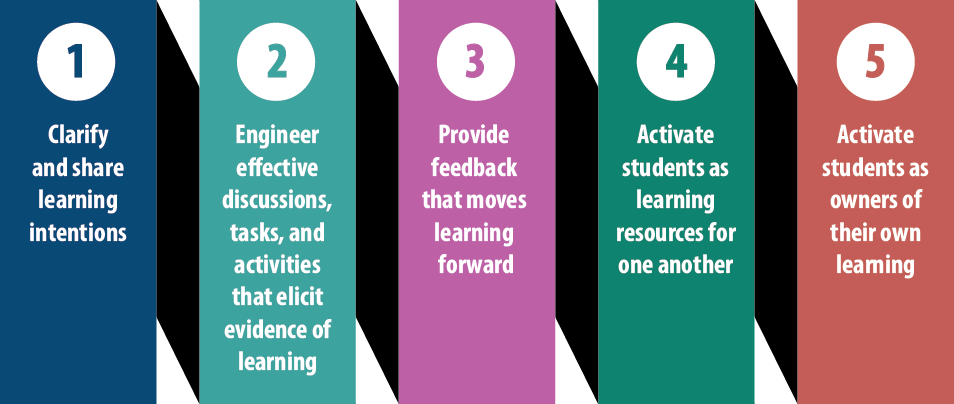“Give a man a fish, and you feed him for a day; teach a man to fish, and you feed him for a lifetime.” This well-known adage, said in many ways and by many people, suggests that enabling self-sufficiency is one of the greatest gifts a person can give to another. Peer feedback and self-assessment—the final two steps of Assessment for Learning (AFL)—are, fundamentally, this adage put into practice.

Dig Deeper: Assessment for Learning looked at AFL with a broad view of the steps and stages involved, while Dig Deeper: Assessment and Feedback focused on the two main tools used in AFL. This post is meant to focus on the final two steps of the AFL process. These two steps focus on the student’s growth and are intrinsic to a successful AFL implementation. The question becomes how to do them well.
Peer Feedback
Peer feedback is the act of allowing students to assess and evaluate one another’s work to improve the work. But, like many things, it is easier said than done. In order to properly engage with a piece of work with the goal of improving it, students need to understand what it should look like when done successfully. Before students can help each other, instructors need to take the time to help establish the standards of success. This is more than just passing out a rubric, though a rubric certainly helps; rather, it involves providing examples and discussing together what makes those examples either successful or not.
Peer feedback allows students to see their work with new eyes, while also opening the field for honest conversation that students may be too intimidated to have with an instructor. Insightful feedback will show a student where they may have failed to fulfill up to their potential for success but before they’re expected to have “perfected” the piece of work.
Peer feedback does more than help the student whose work is being assessed—though the benefits in this case are numerous—but it also aids the students giving the feedback. How? Providing feedback that is both useful and insightful requires students to stretch their own understanding of the topic and what makes something successful. The act of providing feedback encourages a student to think both critically and analytically—a skill that is useful in all endeavors of life.
And, as a bonus, peer feedback helps engage students’ social skills. The ability to provide feedback in respectful, insightful ways will serve students well once they reach the workforce.
Self-Assessment
The final step of AFL is self-assessment. Ironically, however, this is not something students can truly engage in on their own. Self-assessment is enabled by instructors providing constructive opportunities for students to engage with their own work.
Self-assessment can happen in every stage of the learning process, but as with peer feedback, students needs to know what success looks like before they can know where they are in the process. Students will not learn how to self-assess immediately—at least not well. They need to be taught how. Like many things, self-assessment is a learned skill. It is, however, a skill that will set up students for a lifetime of success.
Provide students with chances throughout the learning process to look at their own understanding. Encourage students to ask questions without shaming them for lack of understanding, give opportunities for one-on-one learning—office hours are a blessing that should not be taken for granted—and give them opportunities to improve on former work.
There is an unfortunate truth that many students stop interacting with their work the moment they see a grade assigned to it. The learning process meets a very quick end, and very little thought is given to improvement. To work around this automatic thought process, instructors can provide feedback in two rounds. The first round of feedback should involve pointing out both what was done well—encouragement is vital!—and what could use improvement. The key, here, is to provide the opportunity for improvement in a way that does not spell out the answers and allows students to figure out how to improve their work themselves.
It is in this phase that students need to assess their work themselves; it is a culmination of all other moments of instruction, feedback, and self-assessment. They have already been through several steps of the learning process aided by the instructor, but the final step is up to them. They see where they’ve come from, have put in the work to get to where they are, and have a new understanding of where they need to go.
Students can and should be learning at every stage of the AFL process, but for true success, instructor and student both need to be a part of the learning process.
AFL is an amazing tool for instructors to teach material in a way that students will learn and remember. But AFL is about more than teaching material; it’s about teaching students how to learn and giving them the skills to do so successfully.
Sources
Cambridge International Education Teaching and Learning Team. Getting started with assessment for learning. Cambridge Assessment International Education. Available at: https://cambridge-community.org.uk/professional-development/gswafl/.


